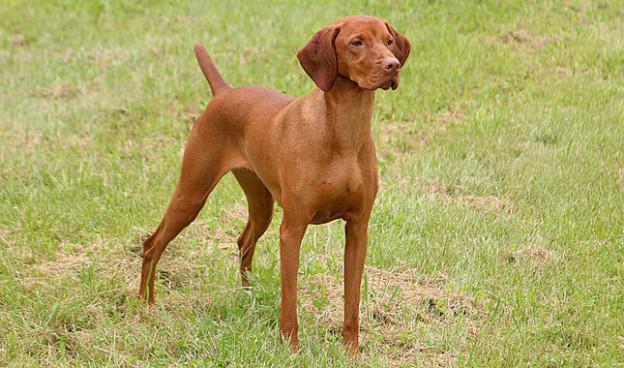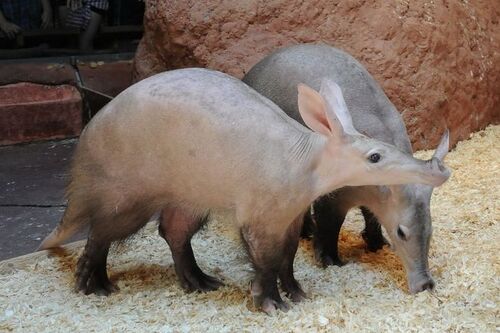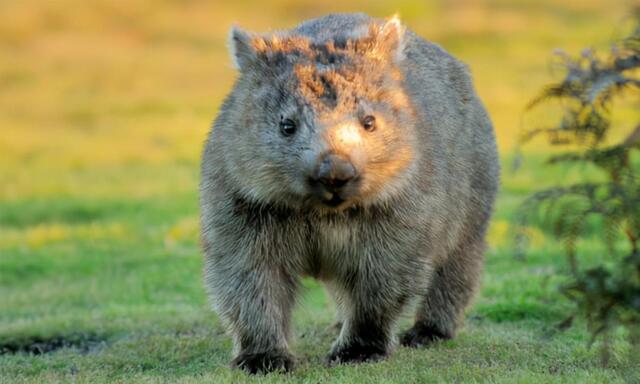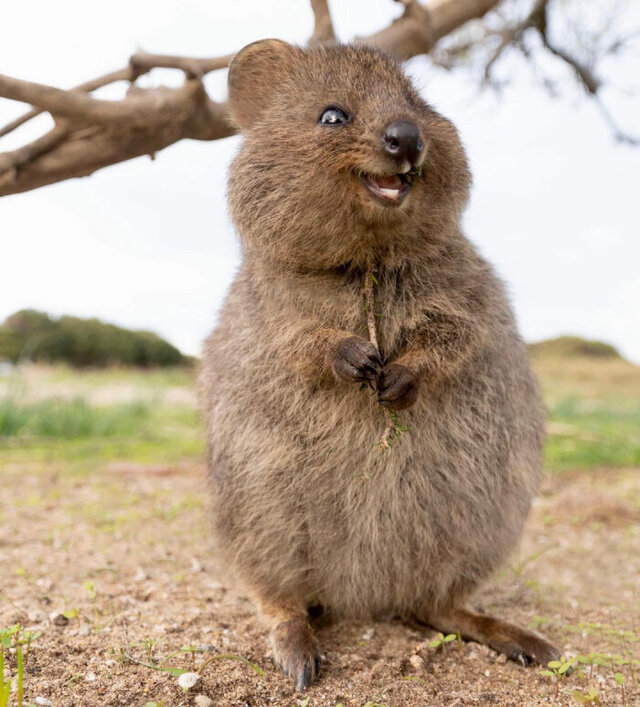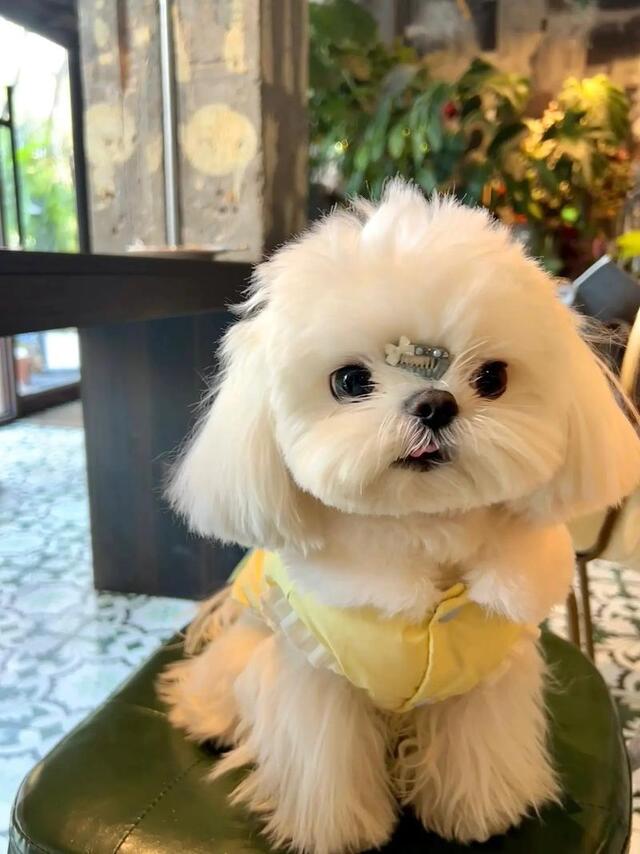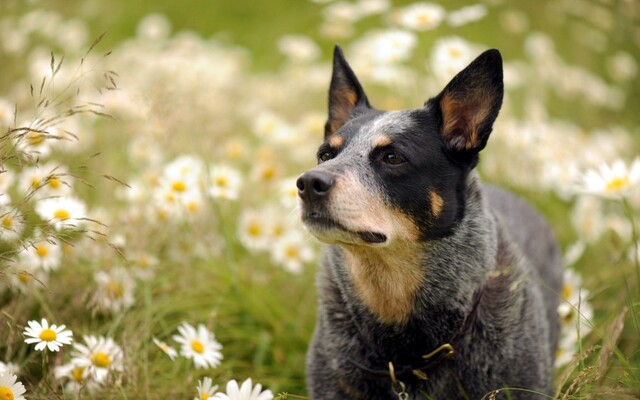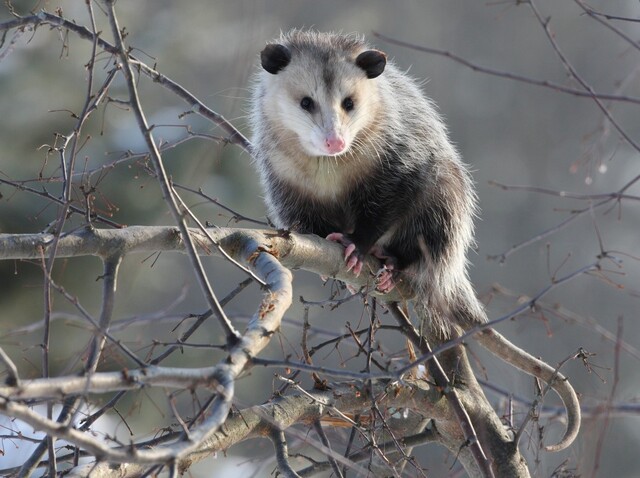Boston Terrier
IUCN
LCBasic Information
Scientific classification
- name:Boston Terrier
- Scientific Name:Boston Bull、Boston Bull Terrier、Boxwood, American Gentlemen
- Outline:Rodents
- Family:C.L.familiaris A.Gentlemen B.Terrier
Vital signs
- length:About 30 cm
- Weight:3 - 11kg
- lifetime:11-13years
Feature
The Boston Terrier is compact and well-proportioned, with a short tail that is usually no longer than two inches (about 5 cm). The coat color varies, mainly white, black, brindle and seal (a dark brown) or a combination of the four. The ideal Boston Terrier should be white, covering its chest, muzzle, neck, half of the front legs, hind legs, and between the eyes (but not on the eyes). The Boston Terrier's body shape and appearance show a more pure symmetrical appearance. Large and prominent eyes are a distinct feature, and the round eyes are far apart, which gives it a unique appearance. It has a gentle temperament, is easy to train, and is regarded as an "American gentleman."
Distribution and Habitat
Mainly distributed in the United States. This breed originated in Boston, USA, and is now widely distributed and raised all over the world.
Appearance
The Boston Terrier is compact and well-proportioned, with a short tail that is usually no longer than two inches (about 5 cm). The coat color varies, mainly white, black, brindle and seal (a dark brown) or a combination of the four. The ideal Boston Terrier should be white, covering its chest, muzzle, neck, half of the front legs, hind legs, and between the eyes (but not on the eyes). The Boston Terrier's body shape and appearance show a more pure symmetrical appearance. Large and prominent eyes are a distinct feature, and the round eyes are far apart, which gives it a unique appearance.
Details
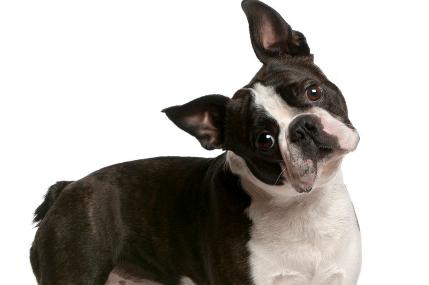
Boston Terrier (scientific name: Boston Terrier, alias: Boston Bull, Boston Bull Terrier, Boxwood, American Gentlemen), is a kind of terrier, life span: 11-13 years. Originated from Boston, USA, it is a non-sporting dog. It is a lively, very intelligent dog, ranking about 54th in canine intelligence, with smooth coat, short head, compact structure, short tail, and very symmetrical dog. The color is tiger-brindle, seal or black with uniform white markings. The size of the head is in proportion to the body, and the expression shows a very high intelligence. Although there is nothing special about it, it can be an excellent guard or companion dog. In the early days, the Boston Terrier was a modified dog breed of bulldogs and bulldogs. Later, a lot of improvements were made by selecting the same breed for mating and breeding with French bulldogs.
Color and markings are prerequisites for distinguishing the breed and identifying AKC standards. Their coat color should be black, seal or with white markings. Boston Terriers are medium-sized dogs with a short tail and erect ears. They are very intelligent and easy to train. They are friendly but sometimes stubborn. Although some of them live into their teens, the average lifespan is 11 to 13 years. Originally, Boston Terriers were kept as ratters and companion dogs, but are now mainly kept as play dogs. They belong to the family Canidae in biological taxonomy.
In 2016, Boston Terriers were listed as the 21st most popular dog breed.
In the early days, the color and markings of the Boston Terrier were not important. But since the early 20th century, its unique markings and colors have been written into the AKC standard and have become its basic characteristics. Boston Terriers have lost most of their aggressiveness and prefer to be with humans, although some male Boston Terriers will still challenge other dogs, but it is also because they feel that their territory is being invaded. Boston Terriers have become the mascots of Boston University and Wofford College in Spartanburg, S.C.
Appearance description
[Habits] This breed is a lively, smart, playful and affectionate breed. The traditional aggressiveness no longer exists. It is suitable as a lovely family pet dog. It likes to go around the house and has a strong personality.
[Body shape] The Boston Terrier is a compact and well-proportioned dog. Generally wrinkle-free. The Boston Terrier is usually 15-17 inches when standing, and its chest is relatively wide.
Height: 30-50 cm; Weight: no more than 11 kg; Lightweight: 7 kg; Middleweight: 7-9 kg; Heavyweight: 9-11 kg (male 3.5 - 11 kg, female 3 - 10 kg).
[Body] Well-developed muscles, firm, thick and broad chest. Short back, slightly sloping waist.
[Head] Square head, angular skull, flat top, slightly arched neck, short muzzle, but with even or slightly protruding jaw and bite. The size of the head must be proportional to the body.
[Ears] Erect ears, thin and upright, growing at both ends of the skull.
[Eyes] Round eyes, large and protruding eyes are a distinct feature. The round eyes of this breed are far apart.
[Nose] Black and wide nose
[Chin] The upper lip is large and drooping, the mouth is tightly closed, completely covering the teeth. The jaw is wide and square.
[Limbs] The thighs are muscular, the forelimbs are straight, and the hindlimbs are strong.
[Paws] The words are strong, firm, and the toes are clearly raised.
[Tail] The tail is short and straight, slightly crooked. The tail is low and usually drooping.
[Coat] Short and thin, smooth and shiny, the appearance of a small jacket-like pattern is more popular.
【Coat color】 1. Gray with white markings; 2. Gray should be clearly distributed throughout the body; 3. Black with white markings. But gray with white markings is better.
【Gait】 The footing is firm and the steps are neat. The front and hind legs move forward in the same straight line, with perfect rhythm. Each step is powerful and graceful. Gait defects: swaying, paddling posture, interlaced steps. Horse step. Severe gait defects: cross steps in both front and hind legs.
【Care】 The heads of puppies are large, and most of them need caesarean sections when they are born. Due to the high cost of surgery, the breed is limited to bloodlines with breeding value.
According to the International Breed Standards, the weight of a dog should not exceed 25 pounds (11 kg). Therefore, the AKC divides this breed into five categories: under 15 pounds, 15 pounds, under 20 pounds, 20 pounds, and not more than 25 pounds.
Coat Color
The Boston Terrier's coat color is primarily white, black, brindle, and seal (a wet seal color that resembles dark brown and appears black in the spring) or a combination of the four. Any other color is not recognized by the AKC, as their sub-types are usually bred through crossbreeding with other dog breeds, which makes them lose their characteristic "tuxedo" appearance.
According to the AKC, the ideal Boston Terrier should be white, covering its chest, muzzle, neck, half of the front legs, hind legs, and between the eyes (but not on the eyes). The symmetrical appearance is obviously purer, as shown by its conformation. Due to its appearance similar to that of a formal human dress, in addition to its elegant and pleasing characteristics, the breed is often called the "American Gentleman".
Its genetic variation results in a short tail. These short tails may be spiraled, curled, or of course straight. But generally speaking, the Boston Terrier's tail is no longer than two inches.
Living habits
Boston Terriers are gentle, patient, and get along well with other pets, dogs, and children. They are easy to make friends and have a good sense of humor, and usually display an intense, helpful behavior. They are very sensitive to the sound of their owner's voice, eager to please their owners, very resilient, very adaptable, and easy to train. They are quiet dogs and rarely bark, but their protective nature may lead to an aggressive attitude towards other pets and strangers. This dog breed is not easy to shed hair and usually requires only minimal grooming.
Health problems
The curvature of the back may be caused by a problem with the patella of the hind legs, which in turn causes the dog's center of gravity to lean forward onto the front legs. It may also be just a structural defect with little actual effect on the dog. Due to their short muzzles, many Boston Terriers cannot tolerate hot or cold weather, and requiring them to exercise in these circumstances may cause them harm. An overly sensitive digestive system is also typical of the Boston Terrier, and its flatulence is often related to the poor eating habits of this dog breed.
Their large, protruding eyes make them susceptible to corneal ulcers. Because of the breed's short muzzle and large eyes, their eyes are also susceptible to injury from contact with sand, dust, debris, or sharp objects, such as thorny plants.
The Boston Terrier is a brachycephalic breed. The word comes from the Greek root brachy. This structure may result in tiny nostrils and a narrow trachea. Boston Terriers may be prone to snoring and sneezing, which is used to clean the palate of mucus, which is not harmful to the dog. Brachycephalic dogs may be prone to complications under general anesthesia. Boston Terriers are often required to have Caesarean sections when giving birth, and in a UK Kennel Club survey, more than 90% of litters were delivered by this method.
Grooming
The Boston Terrier has a short, smooth coat that requires minimal grooming. Boston Terriers will shed slightly, and brushing their fine hair once a week can effectively remove the shed hair. Brushing promotes healthy fur growth because it secretes skin oils and encourages new fur growth. Boston Terriers' nails need to be trimmed regularly. Untrimmed nails can not only cause pain to the dog, but also make it difficult for the dog to walk, or fall off after tripping over something.
Brushing teeth should also be done regularly to maintain good oral health. By brushing teeth regularly, you can reduce the risk of oral pain, gum infection or bad breath by removing plaque and other bacteria.
Feeding method
In the daily feed, medium and small dogs need 200-250 grams of meat, and large dogs need 300-350 grams of meat, and add an equal amount of dry vegetarian food or biscuits.
Meat food should be boiled for 15-20 minutes, chopped, mixed with cooked dry vegetarian food and an appropriate amount of warm boiled water, and then fed.
How much feed should be provided every day can be appropriately controlled according to the size of the dog, so as to be just right. Too little will cause malnutrition.
If it is not enough, it will lose its lively and lovely posture and image; if it is too much, it will become fat due to overnutrition, thus losing its charming charm. Feeding should be provided at regular times, fixed quantities and fixed locations, and it should be finished within 15-25 minutes. If it is too late, the food and food bowl should be taken away. It should not be allowed to delay the time and develop the bad habit of eating at irregular times.
In the morning or evening every day, take it out for a walk or stroll, but do not let it run fast or exercise vigorously, otherwise, it will pant and be short of breath.
It needs to comb its coat with a comb or brush every day to keep its coat clean and shiny, and bathe it regularly, every 20-30 days when it is cool, and every 3-5 days when it is hot. The hair on the head (forehead), nose bridge and abdomen that is too long should be trimmed regularly to make the short white hair appear, making it more beautiful and cute. The toenails should also be trimmed every 10-5 days.
If you can apply a little olive oil on the hair after taking a bath and drying the water, and then wipe it with soft materials such as fluff or silk for a while, its appearance will appear more beautiful and attractive.
During the breeding process, you should often train the dog to develop a habit of paying attention to hygiene, such as defecating at a fixed point, not scratching the sofa and clothes with your claws, etc. You should also remove earwax and dental plaque from the dog every few days. Its eyes are large, and dust and foreign objects can easily enter and cause eye diseases, so you should often use 2% boric acid water to clean the eyes and eye sockets to avoid bacterial infection.
Because the Boston Terrier is a short-nosed dog with a short respiratory tract and is prone to heatstroke, you cannot let it go out for a walk at noon in summer, or do other high-intensity exercises. In addition, its nose is prone to cracking. When the climate is dry in winter and autumn, you should often apply a small amount of glycerin, vaseline and other oils on the nose to prevent the nose from cracking. Normally, you should also pay attention to whether the dog's mental state has changed, its appetite, the shape of its feces, and the dryness and wetness of its nose pads, as well as the temperature and coldness of its nose pads. Once a disease is found, it should be treated early.
The puppies have large heads, and most Boston Terriers need caesarean sections when they are born. Due to the high cost of surgery, the breed is limited to bloodlines with breeding value.
Value of existence
In the past, Boston Terriers were mainly fighting dogs, but because of their friendly and pleasant temperament, they have become companion dogs. Today, in addition to being an excellent companion, Boston Terriers are also proficient in various dog sports. They are becoming more and more popular in dog events such as agility competitions, obedience training, relay races, tracking, dock diving, flyball, weightlifting, barn hunting, and lure chasing. It is a versatile dog breed with an outgoing personality and a desire to make new friends. It is a very popular healing dog.
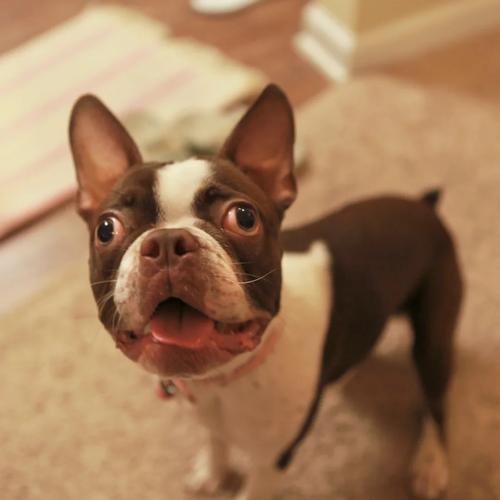
A shining star
In 1921, during a ceremony honoring the 102nd Infantry Regiment, the U.S. Army presented a gold medal to a glorious war dog: Sergeant Stubby. The bulldog, who had three service bands and one wounded band, was awarded a U.S. Army commission—making him the first dog ever to do so. The comforting war dog also received a medal from France. Sergeant Stubby, wearing a medal, died in 1926, but became America's "greatest war dog."
In 2012, a high school student named Victoria Reed took the advice of her veterinarian and submitted a photo of her Boston Terrier (Bruschi) to the Guinness Book of World Records. Because each of Bruschi's eyes is 1.1 inches (2.8 cm) in diameter, it was recognized by the Guinness Book of World Records as the "dog with the largest eyes."
FCI Standards
FCI Number: 140
FCI Group: Group IX: Companion and Toy Dogs
Height: Male Boston Terrier 16.9-15.0 inches (43.0-38.1 cm) at the shoulder Female Boston Terrier 0.0-0.0 inches (0.0-0.0 cm) at the shoulder
Weight Range: Male Boston Terrier 24.9-9.9 pounds (11.3-4.5 kg) Female Boston Terrier 0.0-0.0 pounds (0.0-0.0 kg)
Head (head, face, eyes, ears, nose, mouth, muzzle, jaws, teeth)
Skull: square, flat on top, without wrinkles, with prominent frontal bones. Nose: black and wide, with open and well-defined nostrils. Muzzle: short, square, broad and deeply wrinkled, not exceeding one-third of the length of the head. Lips: well-developed but not pendulous, completely covering the teeth. Jaws/Teeth: Jaws are broad but not protruding, teeth are even, and the bite is scissor-like or undershot. Face: Flat. Eyes: Broad, large and round, black in color, showing alertness and intelligence. Ears: Small, erect, natural or cropped, in harmony with the shape of the head, and as close to the skull as possible.
Body (Neck, Chest, Ribs, Loin and Back, Front of Body, Skin)
Neck: The length of the neck must be in balance with the body, slightly arched, and then curve gracefully to the head. Body: The body should appear short. Back: Short and wide enough. Croup: Croup curves slightly fixed to the tail. Chest: Deep and moderately wide, with well-sprung ribs.
Limbs (Forequarters, Shoulders, Upper Legs, Pasterns, Pasterns, Paws, Hindquarters, Thighs, Hocks, Knuckles and Hock Nails)
Forequarters: Forelegs are well set and well spaced. Shoulders: Slightly laid back. Pasterns: Short, strong and turning neither in nor out. Front feet: Small, round, compact, not turned out. Thighs: Strong, muscular. Stifles: Moderately bent. Hind feet: Small, round, compact, turning neither in nor out. Toes slightly arched.
Tail: Set low, short, thin, straight or spiral.
Gait/Movement: Confident gait, perfect movement of front and hind legs, showing grace and power.
Disqualifications:
Faults: Any departure from the foregoing points is to be faulted, and any dog showing marked physical or behavioral abnormalities shall be disqualified.
AKC Official Standard (approved February 11, 2011, effective March 30, 2011)
General Appearance: The Boston Terrier is an active, highly intelligent, smooth-coated, short-headed, compactly built, short-tailed, well-balanced dog, colored brindle, seal, or black, evenly marked with white. The head is proportional to the size of the dog, and the expression indicates high intelligence.
General Appearance: The body is fairly short and sturdy, with strong and neatly turned limbs, a short tail, and no prominent features that would make the dog appear out of proportion. The dog gives an impression of firmness, strength and activity, with a noble style; graceful manners.
The proportioned combination of "color and white markings" is a particularly striking feature of the representative specimen.
In determining the relative value of the overall appearance to other points, special consideration shall be given to "balance, expression, color and white markings".
Size, Proportion, Substance:
Weight: Divided into the following grades: 15 pounds or less; 15 pounds to under 20 pounds; 20 pounds to not more than 25 pounds.
The length of the legs must be in balance with the length of the body, giving the Boston Terrier a striking square appearance. The Boston Terrier is a sturdy dog that must not appear slender or coarse. Bone and muscle must be proportional and enhance the dog's weight and structure.
Faults - Blocky or coarse appearance.
Effect of Sex. In comparing specimens of each sex, the only noticeable difference is a slight improvement in size in the bitches.
Expression: The skull is square, with a flat top and no wrinkles, flat cheeks, prominent eyebrows, and a well-defined forehead.
The ideal expression of the Boston Terrier is alert and kind, indicating a high level of intelligence. This is the most important characteristic of the breed.
Eyes: Wide-set, large, round, and dark in color. Eyes are set square to the skull, with the outer corners in line with the cheeks when viewed from the front.
Disqualification - Eyes that are blue or have any trace of blue. Ears are small, erect, natural or cropped to conform to the shape of the head, as close to the corners of the skull as possible.
Head: Muzzle is short, square, broad, deep, and in proportion to the skull. There are no wrinkles, and the length is shorter than the width or depth; the length does not exceed about one-third of the length of the skull. The muzzle from nose tip to nose is parallel to the top of the skull. The nose is black and wide, with a well-defined line between the nostrils.
Disqualification - Dudley nose. Jaws are broad and square, with short, even teeth. Bite is even or the underjaw is protruding, making the muzzle square. Jaws of moderate depth, but not drooping, fully covering teeth when mouth closed. Serious faults - Wry mouth. Head faults - Too much white or cyan in the eyes. Narrow or wide nostrils. Size of ears not in proportion to size of head. Serious head faults - Mouth
The tongue or teeth are not exposed when the jaw is closed.
Body: Neck, Topline and Body: The length of the neck must show the dog's overall balanced image. The neck is slightly arched, gracefully lifting the head and fitting neatly to the shoulders. The back is short enough to give the body a square appearance. The topline is level, with a slight curve at the croup to the root of the tail. The chest is deep and broad, with well-springing ribs extending back to the loins. The body should appear short. The tail is low-set, short, thin and pointed, straight or spiraled, and should not be higher than horizontal. (Note: The ideal tail length is no more than one-fourth of the distance from the root of the tail to the hock.)
Disqualification - Docked tail. Physical faults - Tail carried gaily. Serious physical faults - hunchback, swayback, flat sides.
Forequarters: The shoulders are sloping and well laid back, allowing the Boston Terrier to move gracefully. The elbows are neither in nor out. The forelegs are moderately spaced and in line with the top of the withers. The forelegs are straight-boned, with short and strong pasterns. Dewclaws may be removed. Feet small, round and compact, turning neither in nor out, with well-arched toes and short nails.
Faults - Lack of muscle in legs; splayed feet.
Hindquarters: Thighs strong and muscular, stifles bent and well placed. Hocks short, turning neither in nor out, with well-defined hock joints. Feet small and compact, with short nails. Faults - Straight stifles. Gait: The Boston Terrier's gait is sound, straight, with the front and hind legs moving forward in perfect rhythm, each step showing grace and power.
Gait Faults - No rolling, paddling or rocking in the gait. Hackney gait.
Serious gait faults - Any crossing action, either front or rear.
Coat: Coat short, smooth, bright and fine in texture.
Color and markings: Brindle, seal, or black with white markings. Brindle is preferred only when all other qualities are equal. (Note: Seal color is defined. Seal color appears black but appears red when viewed in sunlight or bright light.) Disqualification - Solid black, solid brindle, or solid seal color without the required white markings. Any color not described in the standard. Required markings: White muzzle band, white spot between eyes, white forechest. Ideal markings: White muzzle band, uniform white markings between eyes and over head, white collar, white forechest, partial or complete white on forelegs and hind legs below hock. (Note: Representative samples should not be penalized for not having "ideal markings.") Dogs with more white on the head or body must have enough advantages to offset their deficiencies.
Temperament: The Boston Terrier is a friendly and lively dog. The breed has a good temperament and a high level of intelligence, which makes the Boston Terrier an unparalleled companion dog.
Summary:
The clean, short-backed body of the Boston Terrier, combined with its distinctive square head and chin features, and striking markings, create the most stylish and charming American native dog breed: the Boston Terrier.
Scoring Criteria
General Appearance 10
Expression 10
Head (muzzle, jaws, bite, skull and stop) 15
Eyes 5
Ears 5
Neck, topline, body and tail 15
Forequarters 10
Hindquarters 10
Feet 5
Color, coat and markings 5
Gait 10
Total 100
Disqualification: Blue eyes or any trace of blue. Dudley nose. Docked tail. Solid black, solid brindle or solid seal color without the required white markings. Any color not described in the standard.

